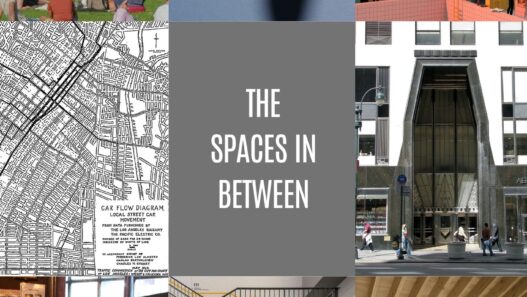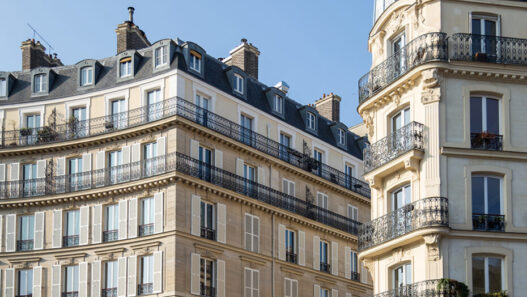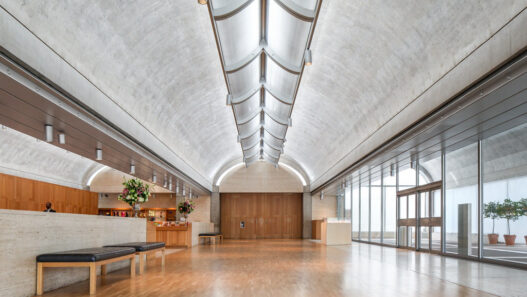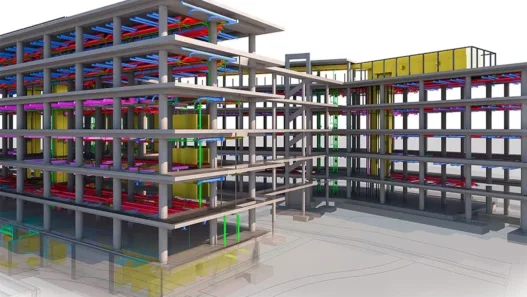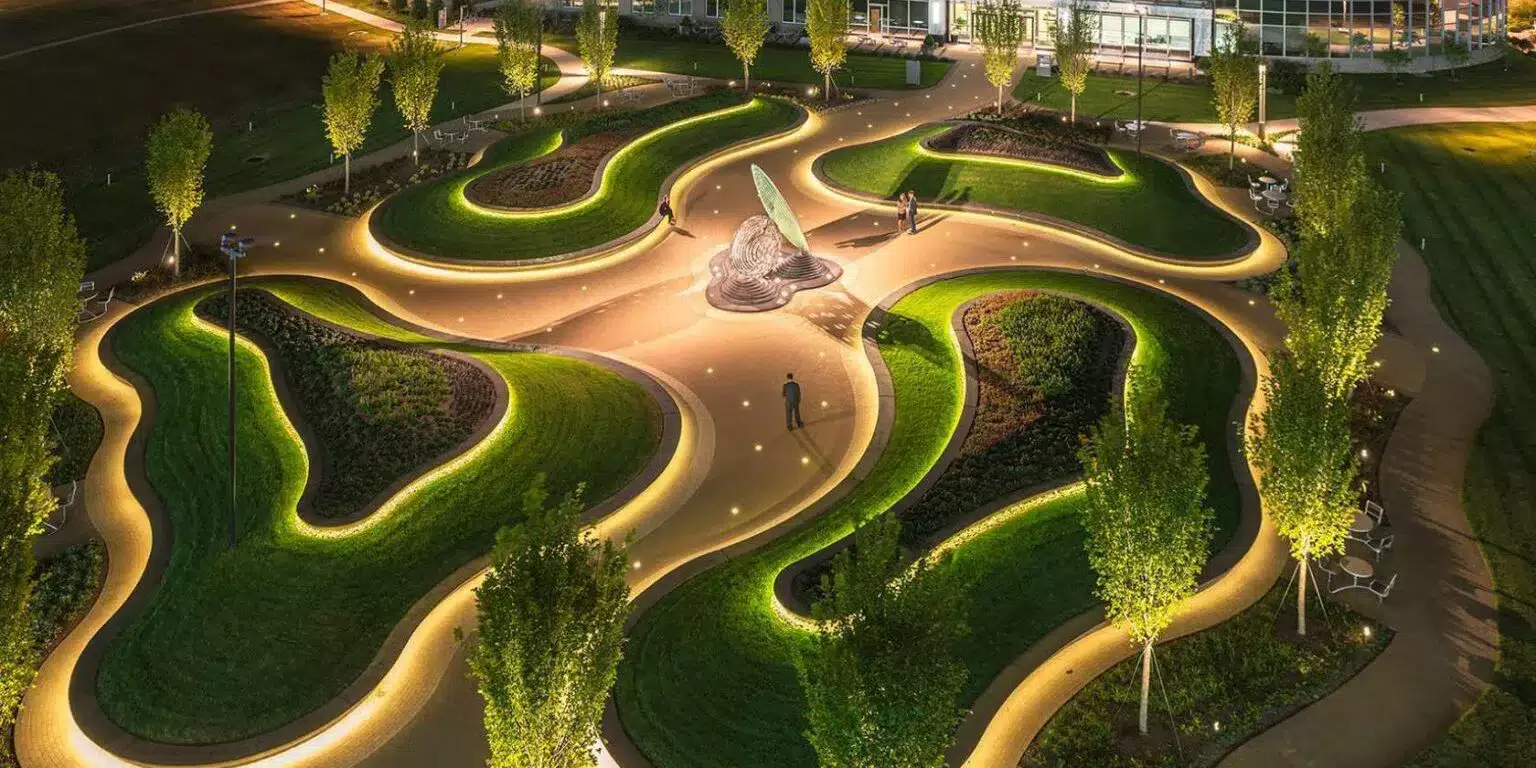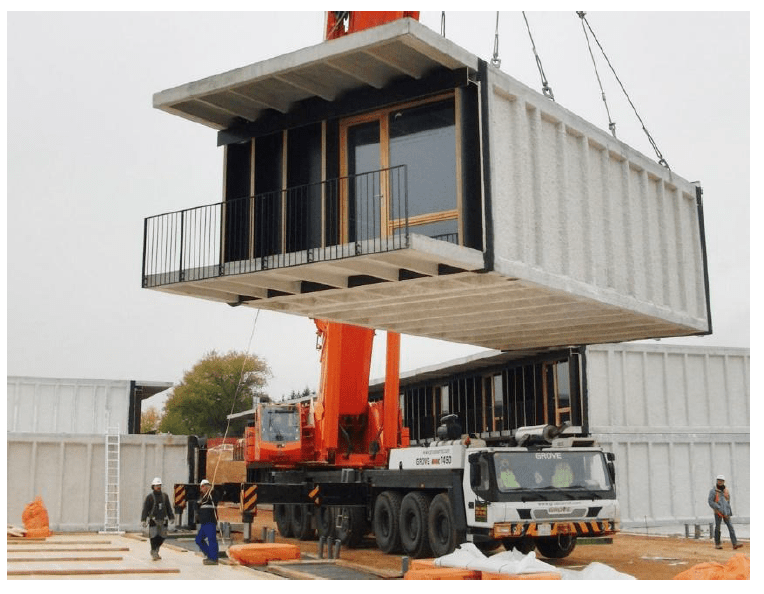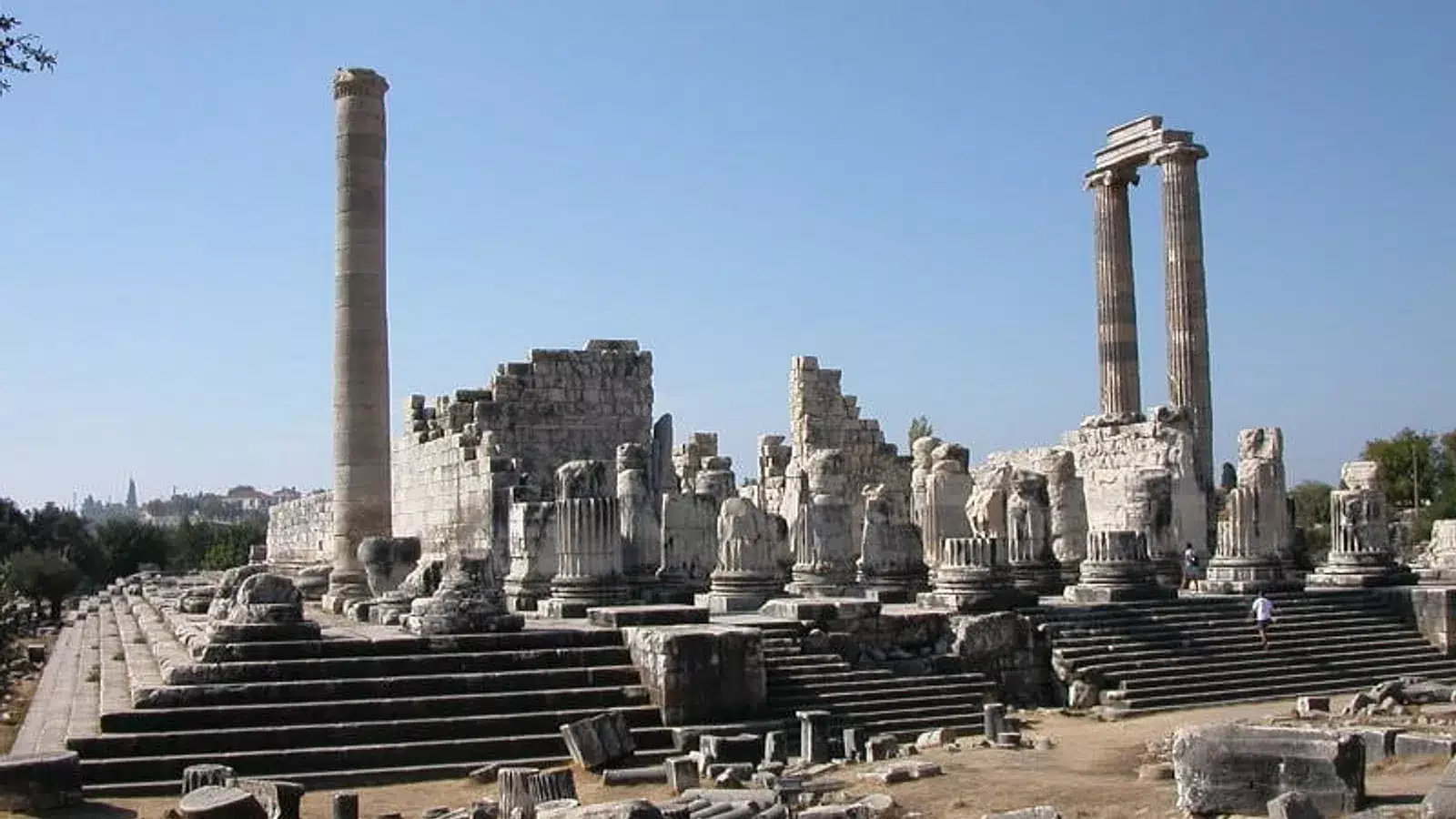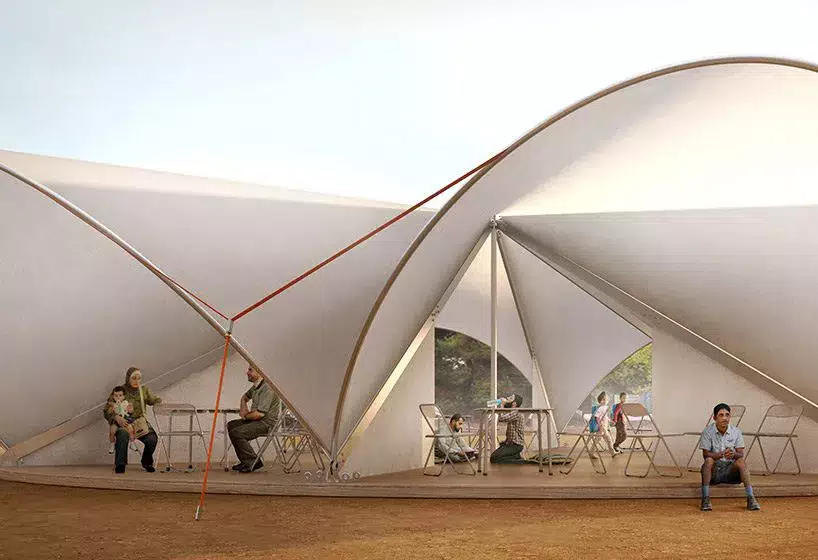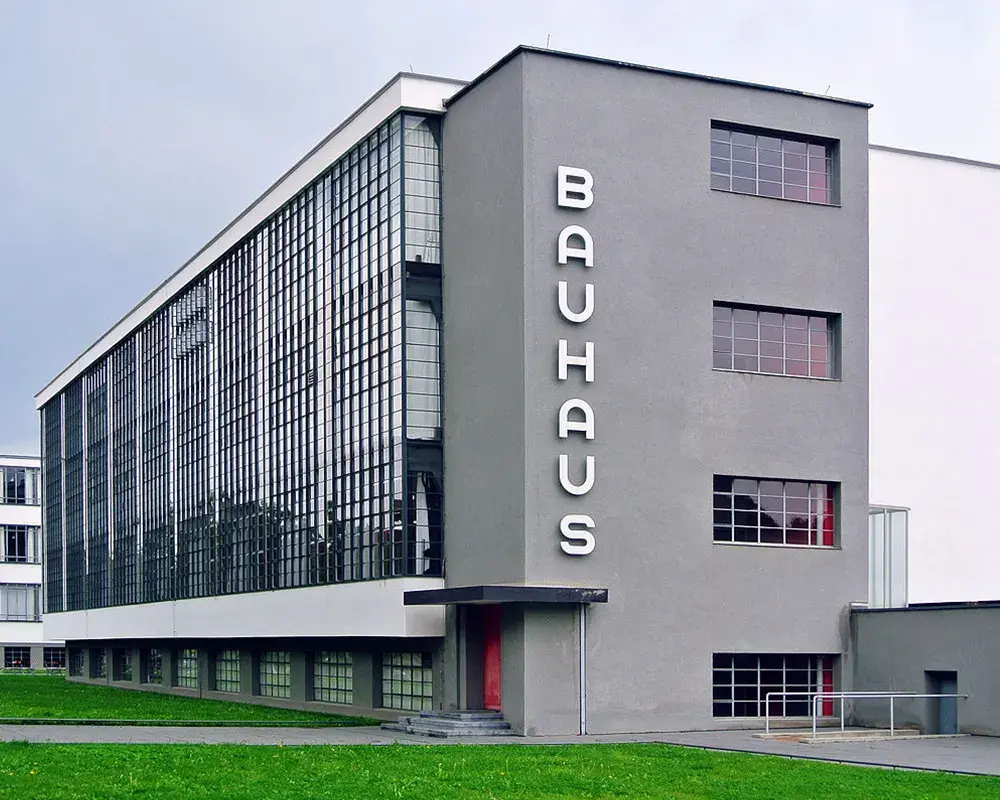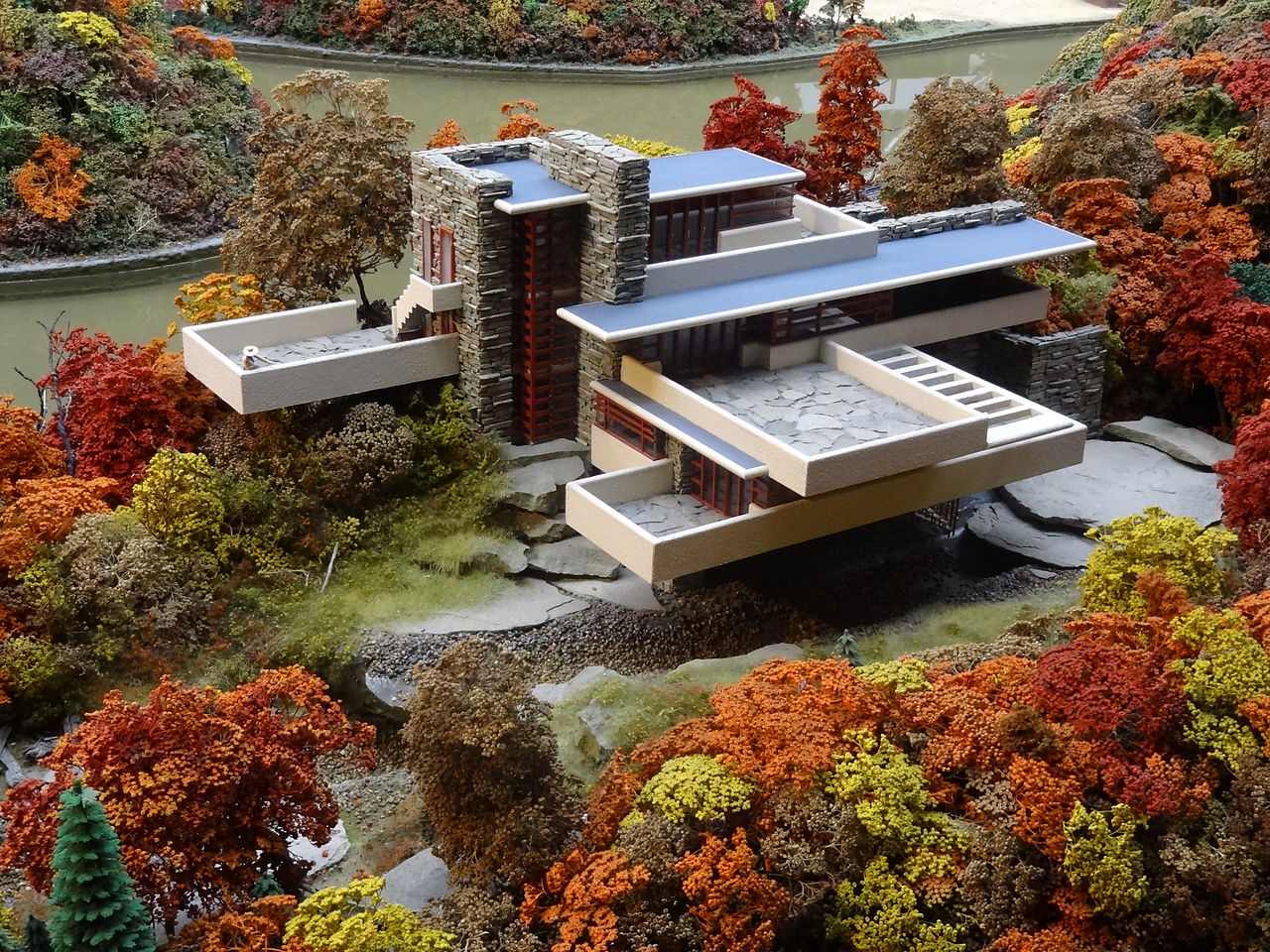Cities are among the most complex and dynamic structures developed by humanity throughout history. Today, the majority of the global population lives in cities and this proportion is growing rapidly. This rapid urban growth brings with it a variety of challenges and opportunities. In addition to improving quality of life, the planning and design of cities also involves important elements such as sustainability, social cohesion and environmental balance.
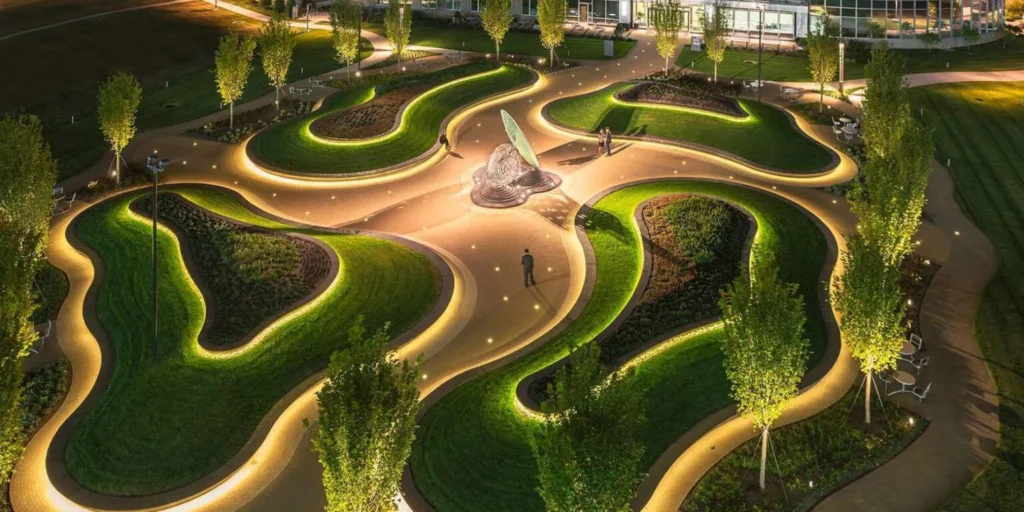
At this point, the role of landscape architecture is vital. Landscape architecture is a discipline that aims to create livable, aesthetically and functionally rich areas by combining natural and artificial elements. The influence of landscape architecture in urban planning is increasing and it plays a decisive role in shaping urban areas.
Definition of Landscape Architecture and its role in Urban Planning
Landscape architecture is a multidisciplinary field that focuses on the design and management of the built and natural environment. It encompasses a wide range of elements, including
- Outdoors: Parks, gardens, plaza, streetscapes and other public and private spaces.
- Natural systems: Forests, wetlands, rivers and other ecological features.
- Infrastructure: Roads, bridges, utilities and other built elements that shape the landscape.
- Human experience: How people interact with and experience the environment.
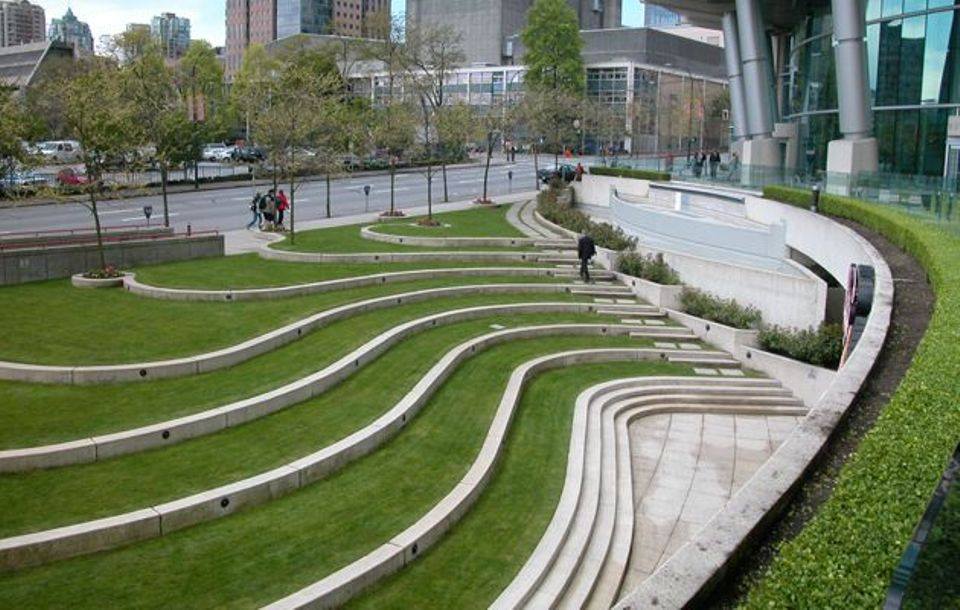

Landscape architects work to create functional, sustainable and aesthetically pleasing environments that improve people’s quality of life and the health of the planet. The role of landscape architecture in urban planning is crucial.
- Shape the urban fabric: Landscape architecture contributes to a more livable and walkable city by creating connected green spaces, pedestrian-friendly streets and vibrant public spaces.
- Tackle environmental challenges: Landscape architects design solutions for stormwater management, air pollution control and climate change adaptation, making cities more resilient and sustainable.
- Improve the visual appeal and character of urban areas: Landscape architecture combines natural elements and thoughtful design to create a sense of place and enhance the aesthetic quality of the urban environment.
Historical Context and Evolution of Landscape Architecture
Landscape architecture has a long and rich history dating back to ancient civilizations. Early examples include the hanging gardens of Babylon and the formal gardens of the Roman Empire.
Important milestones in the evolution of landscape architecture are:
- Renaissance: Renewed interest in classical design principles and the development of formal gardens.
- 18th and 19th centuries: The rise of landscape design in England with figures such as Capability Brown and Humphry Repton.
- 20th century: The emergence of modern landscape architecture influenced by the Bauhaus movement and the principles of functionalism.
- 21st century: An increasing emphasis on sustainability, ecological design and the integration of technology into landscape architecture.












If you wish, you can read our article The Use of Water in Architecture.
The Importance of Landscape Architecture in City Planning
Landscape architecture plays a vital role in creating healthy, sustainable and livable urban environments.
- Environmental benefits: Improved air quality, reduced stormwater runoff and increased biodiversity.
- Social benefits: Improved public health, increased social interaction and sense of community.
- Economic benefits: Increased property values, revitalized tourism and improved quality of life for residents.
By incorporating landscape architecture into urban planning, cities can become more resilient, equitable and enjoyable places to live, work and play.
The Role of Landscape Architecture in Urban Design
Creating Sustainable and Livable Cities
Landscape architecture plays a fundamental role in shaping sustainable and livable cities. It goes beyond simply beautifying urban areas; it actively contributes:
- Environmental Sustainability: Landscape architects integrate green infrastructure such as rain gardens, green roofs and permeable pavements to manage stormwater runoff, reduce the urban heat island effect and improve air quality. They also prioritize native plant species and biodiverse ecosystems to increase biodiversity and ecological resilience.
- Social Sustainability: By creating accessible and inviting public spaces, landscape architects encourage social interaction, support community building and improve the quality of life of urban residents. By prioritizing inclusivity and accessibility, they ensure that everyone can enjoy the benefits of well-designed urban environments.
- Economic Sustainability: Well-designed urban landscapes can increase property values, attract tourism and support local businesses. They also contribute to a healthier population, leading to reduced healthcare costs and increased productivity.
Designing Public Spaces and Parks
Landscape architects are crucial in designing public spaces and parks that are both functional and aesthetically pleasing. They consider factors such as





- Accessibility and usability: Creating inviting and accessible spaces for people of all ages and abilities with clear pathways, seating and amenities.
- Safety and security: Design spaces that feel safe and secure, taking into account adequate lighting, visibility and potential hazards.
- Aesthetics and character: Incorporating elements of natural beauty such as trees, water features and diverse plant life to create a sense of place and enhance the visual appeal of the site.
- Functionality: Designing spaces to meet specific needs, such as playgrounds for children, community gardens or performance spaces.
Connecting Green Infrastructure and Ecosystem Services
Green infrastructure refers to the network of natural and semi-natural areas that provide ecosystem services such as:
- Stormwater management: Green roofs, rain gardens and bioswales help filter and absorb stormwater runoff, reducing flooding and pollution.
- Improving air quality: Trees and other vegetation absorb pollutants and release oxygen, improving air quality and reducing health risks.
- Climate change mitigation: Urban trees and green spaces mitigate the effects of climate change by helping to reduce the urban heat island effect.
- Protecting biodiversity: Providing habitat for wildlife and supporting biodiversity in urban environments.
Landscape architects play a critical role in integrating green infrastructure into urban design, making cities more resilient and sustainable.
Promoting Walkability and Cycling
Landscape architects contribute to creating walkable and bikeable cities:






- Design pedestrian-friendly streets: Create wider sidewalks, crosswalks and street furniture that encourage walking and make it safer and more enjoyable.
- Create bike lanes and paths: Design dedicated cycling infrastructure that connects different parts of the city and provides safe and convenient routes for cyclists.
- Integrate green spaces: Incorporate parks, plazas and other green spaces along streets and roads to create a more pleasant and inviting walking and cycling experience.
- Reduce traffic congestion: Landscape architects help reduce traffic congestion and improve air quality by encouraging alternative modes of transportation.
Landscape architects contribute to healthier and more sustainable urban environments by prioritizing walkability and bikeability.
Landscape Architecture and Urban Resilience
Addressing Climate Change and Sea Level Rise
Climate change and rising sea levels pose significant challenges for urban areas. Landscape architecture plays an important role in the development of resilient and adaptive urban landscapes:
- Coastal Protection: Design coastal defenses such as seawalls, breakwaters and living shorelines to protect urban areas from erosion and flooding.
- Flood Mitigation: Inclusion of green infrastructure such as rain gardens, bioswales and permeable pavements to manage stormwater runoff and reduce flood risk.
- Reduce Heat Islands: Plant trees and create green spaces to reduce the urban heat island effect, which can exacerbate heat waves and increase energy consumption.
- Adaptation Strategies: Design urban landscapes that can adapt to changing climatic conditions, such as drought-tolerant vegetation and water-saving irrigation systems.



Design for Extreme Weather Events
Extreme weather events such as hurricanes, floods and heat waves are becoming more frequent and intense. Landscape architects are crucial in designing urban landscapes that can withstand these events and minimize their impacts:
- Stormwater Management: Implementation of green infrastructure solutions to manage stormwater runoff and prevent flooding, such as rain gardens, retention ponds and permeable pavements.
- Wind Resilience: Select trees and vegetation resistant to strong winds and design buildings and structures to withstand wind loads.
- Heat Reduction: Create shaded areas and use reflective materials to reduce heat absorption and mitigate the effects of heat waves.
- Emergency Response: Design urban landscapes that facilitate emergency response and evacuation with open roads, designated assembly areas and access to essential services.
Creating Resilient and Adaptive Urban Landscapes
Resilient urban landscapes are designed to withstand disturbances, adapt to changing conditions and bounce back quickly from shocks. Landscape architects contribute to this by
- Diversity and Redundancy: Incorporating diverse plant species and ecosystem services to create a more resilient and adaptive landscape.
- Modular Design: Designing urban landscapes with modular components that can be easily adapted or replaced as conditions change.
- Adaptive Management: Implement monitoring and evaluation systems to monitor the performance of urban landscapes and adjust management strategies as needed.
- Community Engagement: Understanding the needs and priorities of local communities and involving them in the design and management of resilient landscapes.




Connecting Ecosystem Services and Natural Infrastructure
Ecosystem services are the benefits that people derive from natural ecosystems, such as clean air and water, climate regulation and pollination. Natural infrastructure refers to the use of natural systems such as forests, wetlands and rivers to provide these services.
Landscape architects play a vital role in incorporating ecosystem services and natural infrastructure into urban design:
- Green Infrastructure Design: Integrating green infrastructure elements such as rain gardens, green roofs and bioswales into urban landscapes to provide ecosystem services and enhance resilience.
- Natural Solutions: Utilize natural systems such as wetlands and riparian buffers to manage stormwater runoff, improve water quality and provide habitat for wildlife.
- Ecosystem Restoration: Restoring degraded ecosystems to enhance their ability to provide ecosystem services and contribute to urban resilience.
- Urban Forestry: Planting trees and managing urban forests to improve air quality, reduce the urban heat island effect and provide habitat for wildlife.
By combining ecosystem services and natural infrastructure, landscape architects can create more sustainable, resilient and livable urban environments.
Landscape Architecture and Urban Health
Promoting Physical Activity and Mental Health
Landscape architecture plays a crucial role in promoting physical activity and mental well-being in urban environments. By designing spaces that encourage movement and provide opportunities to engage with nature, landscape architects contribute to
- Increased Physical Activity: Creating walkable and bikeable streets, parks and roads that encourage people to be more active and reduce sedentary behavior.
- Improved Mental Health: Designing green spaces that provide opportunities for relaxation, stress reduction and connecting with nature, which are known to have positive impacts on mental health.
- Social Interaction: Creating public spaces that foster the social interaction and community building essential for spiritual well-being.
- Access to Nature: Ensuring that everyone, regardless of socioeconomic status or location, has access to green spaces and nature.
Design for Accessibility and Inclusion
Landscape architects are committed to creating accessible and inclusive urban environments for all people, regardless of their age, ability or background. This includes:
- Universal Design Principles: Apply universal design principles to ensure that all public spaces are accessible to people with disabilities, including ramps, curbs, and accessible seating.
- Sensory Gardens: Designing gardens and green spaces that appeal to people with sensory disabilities with tactile pathways, fragrant plants and sound absorbing features.
- Cultural Sensitivity: Design spaces that are sensitive to the cultural needs and preferences of diverse communities and incorporate elements that reflect their heritage and traditions.
- Equality and Inclusion: Ensuring that all communities have equal access to green spaces and the benefits they provide.





Creating Healthy and Sustainable Urban Environments
Landscape architecture makes an important contribution to the creation of healthy and sustainable urban environments. By integrating green infrastructure and nature-based solutions, landscape architects help to
- Improve Air Quality: Planting trees and creating green spaces absorbs pollutants and releases oxygen, improving air quality and reducing respiratory problems.
- Reduce the Heat Island Effect: Use of trees, green roofs and other vegetation to reduce the urban heat island effect, which can lead to heat stress and other health problems.
- Manage Stormwater Runoff: Implement green infrastructure solutions such as rain gardens and bioswales to manage stormwater runoff and reduce flooding that can pose health risks.
- Promote Biodiversity: Creating habitats for wildlife and supporting biodiversity in urban environments contributes to a healthy ecosystem and improves the quality of life of residents.
Inclusion of Green Spaces and Nature-Based Solutions
Green spaces and nature-based solutions are essential components of healthy and resilient urban environments. Landscape architects play a crucial role in incorporating these elements into urban design:
- Parks and Green Belts: Designing parks, green belts and other green spaces that provide opportunities for rest, relaxation and connection with nature.
- Urban Forestry: Planting trees and managing urban forests to improve air quality, reduce the urban heat island effect and provide habitat for wildlife.
- Green Roofs: Install green roofs on buildings to reduce stormwater runoff, improve insulation and create habitat for wildlife.
- Rain Gardens and Bioswales: Implement rain gardens and bioswales to manage stormwater runoff, improve water quality and create aesthetically pleasing landscapes.
Landscape architects contribute to the creation of healthier, more sustainable and more livable urban environments by combining green spaces and nature-based solutions.
Landscape Architecture and Urban Economic Development
Increasing Property Values and Economic Growth
Landscape architecture plays an important role in increasing property values and stimulating economic growth in urban areas. By creating attractive and functional public spaces, landscape architects contribute to
- Increased Property Values: Well-designed urban landscapes such as parks, plazas and streetscapes can increase property values by enhancing the aesthetic appeal and quality of life in a neighborhood.
- Attracting Investment: A vibrant and attractive urban environment can attract businesses and investors, leading to economic growth and job creation.
- Lower Costs: Green infrastructure such as rain gardens and bioswales can reduce stormwater management costs and improve air quality, leading to lower health costs and increased productivity.
- Improved Quality of Life: A more livable and pleasant urban environment can attract and retain residents and contribute to a thriving local economy.
Design for Tourism and Leisure
Landscape architects are crucial in designing urban areas that attract tourists and provide opportunities for leisure activities. This includes:
- Creating Destination Parks and Gardens: Designing unique and memorable parks and gardens that attract tourists and generate revenue for the city.
- Development of Waterfront Areas: Develop waterfront areas that are attractive to tourists with promenades, marinas and recreational facilities.
- Promote Outdoor Recreation: Create trails, bike paths and other outdoor recreation opportunities that attract visitors and encourage physical activity.
- Developing Cultural Attractions: Incorporating public art, cultural elements and historic landmarks into urban landscapes to create a sense of place and attract tourists.




Creating Vibrant and Dynamic Urban Spaces
Landscape architects contribute to creating vibrant and dynamic urban spaces that are attractive to residents, businesses and visitors. This includes
- Kamusal Toplanma Alanları Yaratmak: Sosyal etkileşimi teşvik eden ve topluluk etkinlikleri için fırsatlar sağlayan plazalar, meydanlar ve diğer kamusal alanlar tasarlamak.
- Caddeleri Aktif Hale Getirmek: Ağaçlar, banklar ve yürümeyi ve sosyalleşmeyi teşvik eden diğer olanaklarla sokakları daha yaya dostu ve canlı alanlara dönüştürmek.
- Kamusal Sanatın Dahil Edilmesi: Estetik çekiciliği artırmak ve bir yer duygusu yaratmak için kamusal sanatın kentsel peyzajlara entegre edilmesi.
- Erişilebilirlik için Tasarım: Tüm kamusal alanların engelliler için erişilebilir olmasını sağlamak, kapsayıcılığı teşvik etmek ve herkes için sıcak bir ortam yaratmak.
Combining Public Art and Cultural Elements
Landscape architects can enhance the cultural identity and economic vitality of urban areas by incorporating public art and cultural elements into their designs:
- Sanatı Peyzaja Entegre Etmek: Heykeller, duvar resimleri ve diğer kamusal sanat biçimlerini içeren, estetik çekiciliği artıran ve bir yer duygusu yaratan kamusal alanlar tasarlamak.
- Kültürel Mirasın Korunması: Tarihi simge yapıların ve kültürel alanların kentsel peyzaja dahil edilmesi, kentin mirasının korunması ve turistlerin çekilmesi.
- Kültürel Bölgelerin Yaratılması: Kentin sanat, müzik ve kültürel olanaklarını sergileyen, sanatçıları, sanatçıları ve ziyaretçileri çeken kültürel bölgelerin tasarlanması.
- Sanatçılarla İşbirliği: Kentsel peyzajı geliştiren ve kentin benzersiz karakterini yansıtan mekana özgü sanat eserleri yaratmak için sanatçılarla yakın işbirliği içinde çalışmak.
Landscape architects contribute to the creation of more vibrant, attractive and economically successful urban environments by bringing together public art and cultural elements.
Landscape Architecture and Urban Environmental Sustainability
Reducing Carbon Footprint and Energy Consumption
Landscape architecture plays a crucial role in reducing urban carbon footprints and energy consumption:
- Kentsel Ormancılık: Gölge sağlamak, kentsel ısı adası etkisini azaltmak ve atmosferdeki karbondioksiti emmek için ağaç dikmek.
- Yeşil Çatılar: Isıtma ve soğutma için enerji tüketimini azaltmak ve yağmur suyu akışını emmek için binalara yeşil çatılar kurmak.
- Geçirgen Kaplamalar: Yağmur suyunun toprağa sızmasını sağlamak, yağmur suyu akışını azaltmak ve kentsel ısı adası etkisini hafifletmek için geçirgen kaplamaların kullanılması.
- Enerji Verimli Tasarım: Daha az sulama gerektiren doğal bitkiler kullanmak ve ısıyı yansıtan malzemeler seçmek gibi enerji tüketimini en aza indiren kentsel peyzajlar tasarlamak.
Design for Water Conservation and Management
Landscape architects are crucial in designing urban landscapes that conserve water and effectively manage stormwater runoff:
- Suya Duyarlı Peyzaj Düzenlemesi: Daha az sulama gerektiren kuraklığa dayanıklı yerli bitkiler kullanmak ve su tasarruflu sulama sistemleri uygulamak.
- Yağmur Bahçeleri ve Biyosavaklar: Yağmur suyu akışını yakalamak ve filtrelemek için yağmur bahçeleri ve biyosavakların dahil edilmesi, sel ve kirliliği azaltır.
- Geçirgen Kaplamalar: Yağmur suyunun toprağa sızmasını sağlamak için geçirgen kaplamaların kullanılması, yağmur suyu akışını azaltır ve yeraltı suyunu yeniler.
- Su Hasat Sistemleri: Yağmur suyunu toplamak ve sulamada yeniden kullanmak için yağmur varilleri ve sarnıçlar gibi su hasat sistemlerinin uygulanması.




Combining Renewable Energy and Green Technologies
Landscape architects can integrate renewable energy sources and green technologies into urban landscapes to promote sustainability:
- Güneş Panelleri: Binalar ve diğer yapılar üzerinde güneş panelleri içeren, temiz enerji üreten ve fosil yakıtlara bağımlılığı azaltan kentsel peyzajlar tasarlamak.
- Rüzgar Türbinleri: Yenilenebilir enerji üretmek için özellikle rüzgar hızının yüksek olduğu bölgelerde rüzgar türbinlerinin kentsel peyzaja dahil edilmesi.
- Yeşil Altyapı: Ekosistem hizmetleri sağlamak ve enerji tüketimini azaltmak için yeşil çatılar ve biyoswaller gibi yeşil altyapıdan yararlanmak.
- Akıllı Teknolojiler: Kentsel peyzajlarda su kullanımı, enerji tüketimi ve atık yönetimini optimize etmek için sensörler ve veri analizi gibi akıllı teknolojilerin uygulanması.
Promoting Sustainable Transportation and Mobility
Landscape architects can contribute to sustainable transportation and mobility in urban areas by
- Yürünebilir ve Bisiklete Binilebilir Sokaklar: Daha geniş kaldırımlar, bisiklet şeritleri ve yaya geçitleri ile yayalara ve bisikletlilere öncelik veren sokak manzaraları tasarlamak.
- Toplu Taşıma Altyapısı: Otobüs durakları ve hafif raylı sistem istasyonları gibi toplu taşıma altyapısını, kullanımı kolay ve cazip hale getirmek için kentsel peyzaja entegre etmek.
- Yeşil Yollar ve Parkurlar: Şehrin farklı bölgelerini birbirine bağlayan yeşil yollar ve parkurlar oluşturmak, yürüyüş, bisiklet ve diğer aktif ulaşım türlerini teşvik etmek.
- Park Talebinin Azaltılması: Park ihtiyacını en aza indiren, alternatif ulaşım türlerini teşvik eden ve trafik sıkışıklığını azaltan kentsel peyzajların tasarlanması.
By combining these strategies, landscape architects can create more sustainable, resilient and livable urban environments that reduce environmental impacts and improve the quality of life of urban residents.
Landscape Architecture and Urban Planning Case Studies
Examples of Successful Landscape Architecture Projects
Here are a few examples of successful landscape architecture projects that demonstrate the transformative power of this field:
- High Line, New York City: Built on a former railway line, this elevated park has become a beloved public space, revitalizing a neglected area and attracting millions of visitors each year. It demonstrates the potential of reusing infrastructure and creating green spaces in dense urban environments.
- Zorluk: Proje, endüstriyel karakterin kaybolmasından ve soylulaştırma potansiyelinden korkan yerel sakinlerin muhalefetiyle karşılaştı.
- Üstesinden gelmek: Proje ekibi, halk toplantıları düzenleyerek, endişeleri ele alarak ve toplumun geri bildirimlerini tasarıma dahil ederek toplumla aktif bir şekilde etkileşim kurdu. Projenin bölgeyi yeniden canlandırma, kamusal yeşil alan yaratma ve endüstriyel estetiği koruma potansiyelini vurguladılar.
- Singapur Gardens by the Bay: This innovative project showcases sustainable design principles with unique super trees that generate energy and collect rainwater. It emphasizes the integration of technology and nature, creating a stunning and environmentally sensitive landscape.
- Kopenhag’ın Bisiklet Altyapısı: Kopenhag, özel bisiklet yolları ağı ve bisiklete öncelik veren kültürüyle bisiklet altyapısında küresel bir lider haline gelmiştir. Bu durum, iyi tasarlanmış kentsel alanların sürdürülebilir ulaşım ve sağlıklı yaşam tarzlarının teşvik edilmesi üzerindeki etkisini göstermektedir.
- The Living Building Challenge: Bu iddialı sertifika programı, net sıfır enerji, su ve atık elde etmeyi amaçlayan projelerle sürdürülebilir tasarımın sınırlarını zorluyor. Peyzaj mimarlığının gerçekten yenilenebilir ve kendi kendine yeterli kentsel ortamlar yaratma potansiyelini sergiliyor.
- The Central Park Conservancy, New York City:
- Zorluk: Bir zamanlar canlı bir yeşil alan olan Central Park, finansman ve bakım eksikliği nedeniyle bakıma muhtaç hale gelmişti.
- Üstesinden gelmek: Kar amacı gütmeyen bir kuruluş olan Central Park Conservancy, fon toplamak ve parkın restorasyon ve bakımını yönetmek için kuruldu. Uzun vadeli bir plan uygulayarak toplumun katılımını sağladılar ve parkı yeniden canlandırmak için önemli miktarda fon sağladılar.
- The Olympic Park, London:
- Zorluk: 2012 Yaz Olimpiyatları için inşa edilen Olimpiyat Parkı, geçici bir etkinlik alanından kalıcı bir kamu parkına geçişinde zorluklarla karşılaştı.
- Üstesinden gelmek: Proje ekibi, parkın yeniden geliştirilmesi için konut, ticari alanlar ve kamusal yeşil alanlar da dahil olmak üzere uzun vadeli bir vizyon oluşturdu. Oyunlar sona erdikten uzun süre sonra da bölge sakinlerini ve ziyaretçileri cezbedecek çeşitlilikte ve ilgi çekici bir ortam yarattılar.



























Lessons Learned and Best Practices
These case studies offer valuable lessons and best practices for landscape architects and urban planners:
- Toplum Katılımı: Başarılı projeler, tasarımların yerel sakinlerin ihtiyaçlarını ve isteklerini karşılamasını sağlamak için kapsamlı toplum katılımını içerir.
- Sürdürülebilirlik ve Dayanıklılık: Su tasarrufu, enerji verimliliği ve iklim adaptasyonu gibi sürdürülebilir tasarım ilkelerini entegre etmek, dayanıklı ve uzun ömürlü kentsel peyzajlar oluşturmak için çok önemlidir.
- İşbirliği ve Multidisipliner Yaklaşım: Başarılı projeler, peyzaj mimarları, şehir plancıları, mühendisler ve diğer profesyoneller arasında işbirliğini içerir ve tasarıma bütünsel ve entegre bir yaklaşım oluşturur.
- Uyarlanabilir Yönetim: Sürekli izleme ve değerlendirme, tasarımları değişen koşullara uyarlamak ve projelerin zaman içinde ilgili ve etkili kalmasını sağlamak için gereklidir.
Innovative Solutions and Future Trends
The field of landscape architecture is constantly evolving with innovative solutions emerging to address the challenges of urbanization and climate change:
- Dikey Yeşillendirme: Sınırlı alanlarda yeşil alanlar oluşturmak, biyolojik çeşitliliği en üst düzeye çıkarmak ve kentsel ısı adası etkisini azaltmak için dikey bahçeler ve yeşil duvarlardan yararlanmak.
- Biyomimikri: Doğal drenaj modellerini taklit etmek veya biyo-bazlı malzemeler kullanmak gibi sürdürülebilir ve dirençli kentsel peyzajlar tasarlamak için doğal sistemlerden ilham almak.
- Akıllı Şehirler ve Teknoloji: Su tasarrufu, enerji verimliliği ve atık yönetimi için kentsel peyzajları optimize etmek amacıyla sensörler ve veri analizi gibi akıllı teknolojilerin entegre edilmesi.
- Rejeneratif Tasarım: Sadece çevresel etkiyi en aza indirmekle kalmayıp aynı zamanda ekosistemleri aktif olarak restore eden ve geliştiren, daha sürdürülebilir bir geleceğe katkıda bulunan kentsel peyzajlar tasarlamak.
By embracing these innovative solutions and future trends, landscape architects and urban planners can create more livable, sustainable and resilient cities for future generations.
Conclusion
Summary of Key Points
Landscape architecture plays a crucial role in shaping sustainable, resilient and livable urban environments. This field goes beyond aesthetics and actively contributes:
- Kentsel Sağlık: Fiziksel aktiviteyi, zihinsel refahı ve doğaya erişimi teşvik etmek.
- Ekonomik Kalkınma: Mülk değerlerini artırmak, yatırım çekmek ve canlı kentsel alanlar yaratmak.
- Çevresel Sürdürülebilirlik: Karbon ayak izlerinin azaltılması, suyun korunması ve sürdürülebilir ulaşımın teşvik edilmesi.
- Kentsel Dirençlilik: İklim değişikliğine uyum sağlamak, aşırı hava olaylarını hafifletmek ve uyarlanabilir peyzajlar oluşturmak.
The Future of Landscape Architecture and Urban Planning
The future of landscape architecture and urban planning is bright with a growing understanding of the link between urban environments and human well-being. Key trends include:
- Teknolojinin Entegrasyonu: Verimlilik, sürdürülebilirlik ve dayanıklılık için kentsel peyzajları optimize etmek üzere akıllı teknolojilerin uygulanması.
- Biyomimikri ve Rejeneratif Tasarım: Kendi kendine yetebilen ve onarıcı kentsel çevreler yaratmak için doğadan ilham almak.
- Toplum Katılımı: Kentsel alanların tasarımı ve yönetiminde toplum katılımına öncelik verilmesi.
- İklim Değişikliğine Uyum: Yükselen deniz seviyesi ve aşırı hava olayları gibi iklim değişikliğinin etkilerine dayanıklı kentsel peyzajların tasarlanması.
Sustainable and Resilient Urban Design
- Peyzaj Mimarlığına Yatırım Yapın: Peyzaj mimarlığının sürdürülebilir ve yaşanabilir şehirler yaratmadaki kritik rolünü kabul edin.
- Sürdürülebilir Tasarım İlkelerini Benimseyin: Sürdürülebilir tasarım ilkelerini kentsel planlama ve gelişimin tüm yönlerine entegre edin.
- Toplum Katılımını Teşvik Edin: Toplulukları kentsel alanlarının planlama ve tasarımına dahil edin.
- Araştırma ve İnovasyonu Destekleyin: Peyzaj mimarlığı ve şehir planlama alanını ilerletmek için araştırma ve geliştirmeye yatırım yapın.
Working together, we can create urban environments that are not only beautiful and functional, but also healthy, resilient and sustainable for future generations.
Discover more from Dök Architecture
Subscribe to get the latest posts sent to your email.



